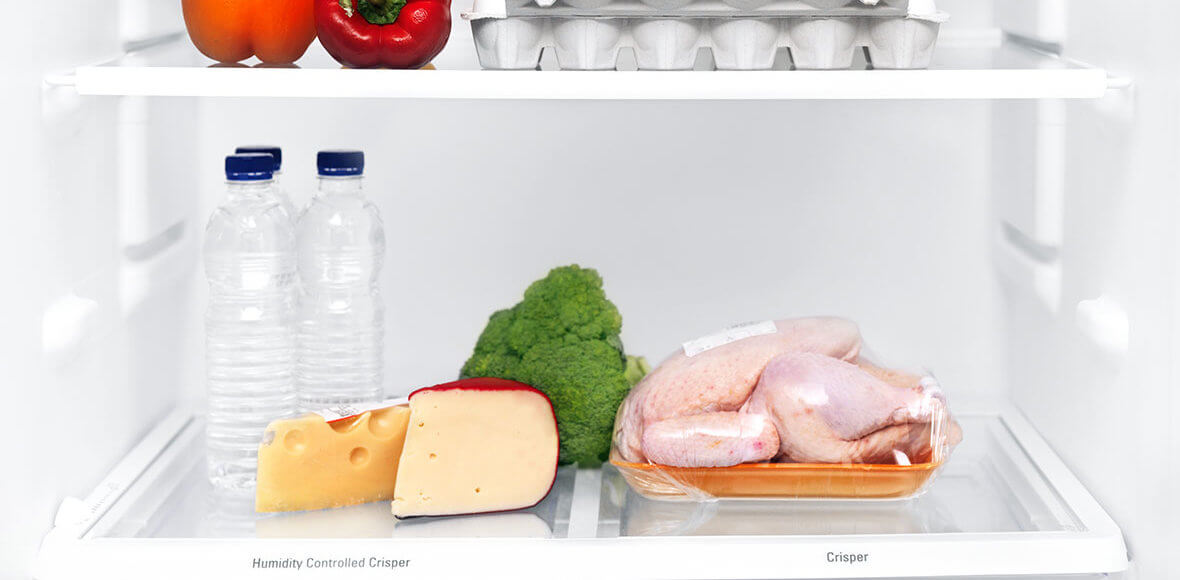
Chicken and Food Safety
Chicken is the most popular meat in the world, and it’s no wonder, given chicken’s versatility—there are literally thousands of recipes for chicken. It’s also a great source of protein – especially for growing children – containing essential vitamins and minerals. It’s also important to be mindful of food safety when preparing chicken.
Raw chicken, like all raw foods, can contain bacteria, including the more familiar Salmonella, which, if ingested, can cause food poisoning. Young children, those over 60, the immunocompromised, and pregnant women are especially at risk of serious illness if infected.
To kill the bacteria, chicken needs to be cooked at a specific temperature – no less than 165 °F (74°C) – and the best way to ensure chicken reaches that temperature is with a meat thermometer.
A meat thermometer is a device for checking the internal temperature of meat. A digital instant-read thermometer ranges from around $30 to over $100 for a fancy one, but even a basic thermometer will do the job, as long as it’s instant-read, and accurate to within a few degrees.
If properly stored, handled, and cooked, chicken can be safely enjoyed. Here are some tips:
Storing Chicken
- When buying chicken, check the “best before” date;
- Check the package for any tears or leaks;
- Place packaged chicken into a separate bag to ensure any potential leaks are contained. Once home, if the package is leaking, transfer to a separate container for storage.
- Don’t forget to wash your hands with soap and water after handling the bag or container the chicken was in—bacteria can be spread through surface-to-surface contact.
- Don’t leave chicken – whether unfrozen or frozen – sitting out for long, especially in the trunk of your car on a hot day. Place it into a fridge, freezer, cooler as quickly as possible.
- Always store raw, packaged chicken on the lowest point your fridge. This prevents other food from becoming contaminated if there are any leaks.
- Check the temperature of the fridge and freezer: the fridge shouldn’t be above 4°C; the freezer should be at -18°C or lower.
- Cook fresh chicken from the fridge within 2-3 days; freeze chicken if you don’t plan on using it right away. Well-wrapped chicken can stay in a freezer for up to a year depending on the cut.
Handling Chicken
- NEVER wash or rinse your chicken. The water can splash and contaminate areas around the sink with potentially harmful bacteria.
- While handling raw chicken, treat your hands like a surgeon would: avoid touching your face, your clothes and anything besides what’s necessary for preparing the poultry. Wash your hands before but especially after you touch raw chicken. And for those who don’t have automatic sensors on their sink faucets, don’t forget to clean those taps, as you probably touched them to wash your hands.
- Use a separate knife and plastic cutting board for poultry, and, when finished, thoroughly wash both before using them for other purposes.
- Thoroughly clean all surfaces, tools, and dishes that may have come into contact with the meat using a kitchen cleaner or diluted bleach solution (5 mL bleach solution to 750 mL of water). If using bleach, ensure hands are protected by rubber gloves.
Defrosting Chicken
- Best method is to defrost chicken in the fridge. To do so, place chicken inside a leak-proof container to contain any juices and to avoid contact with other surfaces;
- Once defrosted, poultry should be cooked immediately;
- Meat that’s been defrosted in a fridge and is 4°C or below, can be safely re-frozen;
- It’s also safe to defrost in cold water or by using the defrost mode in a microwave.
—If using cold water, make sure it’s submerged inside a container in the sink, and frequently change the cold water until is it defrosted. Thoroughly wash the container and the sink after use. —For the microwave, make sure the chicken defrosts in a microwave-safe container to avoid splatter and cross-contamination and, once defrosted, cook immediately.
Cooking Chicken
- Using a meat thermometer is essential to ensure poultry’s internal temperature is high enough to kill any bacteria—165 °F (74°C). Insert the probe into centre of the thickest part of the meat, and avoid touching the bone. Leave it there for at least 10 seconds. Do not rely on the recipe’s cooking time, since times can vary based on weight, or your oven, since oven temperatures can be off.
- While it might be tempting to pop chicken burgers into a toaster—don’t! Always thoroughly cook frozen chicken, including processed chicken foods, according to instruction, using the proper cooking devices, and always handle it as if it were raw—thoroughly wash your hands and any tools, plates or surfaces after using. Use that meat thermometer to ensure the chicken is safe to eat.
- Don’t take chances: whether you’re eating out, at home, or using the BBQ—if you think the chicken isn’t thoroughly cooked, send it back, cook longer, or throw it back on the grill! Make sure to wash or replace your plate and any utensils that touched the improperly cooked meat.
Leftovers
- Refrigerate chicken after an hour of being cooked; use within 3-4 days.